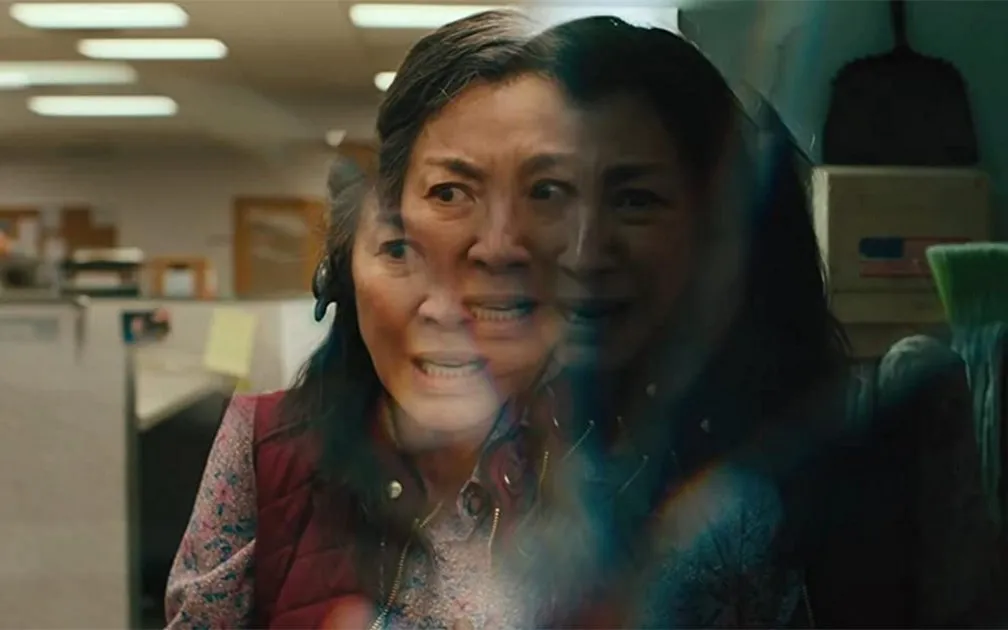essays
It’s Time to Talk About Wolf Girls
Move over, Horse Girls—the Wolf Girl is the high school archetype we deserve

The Wolf Girl somehow isn’t a cultural archetype, not the way Horse Girls are, and yet you knew what one was the moment you saw the words “Wolf Girl.” The Horse Girls are named Vanessa and have long shiny hair and square teeth and practice writing bubble letters and imagine themselves handing an apple to the gentle lips of a beautiful horse named Star (for the star on her forehead). The Wolf Girls are named Diana or Abigail-not-Abbie or Alizon (who used to be Alison), and they are the deeply weird girls whose stare makes others uncomfortable, the girls painting their nails and their purple Jansport backpacks with whiteout, girls with jagged edges and hair dyed to unsettle, the girls who can smell what you’ve got in your lunch, and maybe they want some. They tell you they can see at night. You’ve never seen them with a boy, but you also suspect they see a lot of boys, or girls, or whoever—or at least that they’d know exactly what to do with a boy or a girl or whoever, though it might not be anything you’ve heard about in school. They keep a lot of comics in their backpack, but not superhero comics. You suspect they might bite, figuratively and literally.
Wolf Girls love wolves because they are predators. They want to eat without being eaten.
Wolves, though unsolitary creatures, are shy around humans, and human wolves are similarly ill at ease in human company. They are fiercely loyal when their loyalty is earned, but it takes time to earn their trust, to avoid their snapping teeth and narrowed gaze. They are the subject of stares, but their own stare is controlling.
Wolf Girls love wolves because they are predators. They want to eat without being eaten.
Perhaps it is surprising that there should be such a thing as a Wolf Girl at all. In our stilted patriarchal shorthand, all dogs are boys and all cats are girls, and even more so, all wild predators are men. Wolves in particular are men, so much so that the same word that describes a species in which only a bonded alpha pair will typically mate also describes a predatory ladies’ man.
One controlling image of the wolf is a Tex Avery drawing of a human body with a wolf-like head. The creature wears a double-breasted blazer, red carnation in the buttonhole, and a bow tie. Although his head is shaped like that of a canid, he has a tiny, carefully-groomed mustache in place of whiskers. He looks almost civilized, until he sees a pretty woman and his eyes bulge out like orbital erections. His tongue unfurls. He has to howl. He is carnal appetite and his urge is to devour. As the sloppiest of erotic novels would have it, he’s hungry—but not for food.
We associate predators with hunger, and hunger is only allowable in men.
The human/wolf boundary has long been porous. The word “werewolf” appears once in Old English, in a text from around 1000 CE, and by the sixteenth century, there was “lycanthropy,” a medical condition in which human beings thought themselves to be a wolf or dog. Although the term is more closely associated with fiction and literal transformation today, lycanthropy is still a psychological diagnosis, and people still occasionally suffer the delusion of caninity. But Wolf Girls are not delusional. Like Sheila, they know they are human beings, but spiritually, they are wolves.
What does it mean that the concept of human wolves has been with us so long? Men change into wolves in Ancient Greek literature. Harald Fairhair of Norway had a company of fighting men called the Úlfhednar, or wolf-coated, men who wore wolf skins and were like Berserkers in battle. The werewolf appears in medieval romances. In the Lais of Marie de France, Bisclavret is a werewolf who bites off his cheating wife’s nose after she traps him in wolf form. (Bisclavret is one of the rare werewolves of literature who is portrayed as in control of himself and morally correct.) In the early modern era, there were werewolf witch trials primarily in German- and French-speaking countries. Peter Stumpp, the Werewolf of Bedburg, confessed under torture to cannibalism, including children and pregnant women, as well as to incest and black magic. His execution in 1589 was particularly brutal.
If the vampire is monstrous urbanity and sexuality, the human wolf is monstrous inhuman appetite.
Our fascination with wolves and men and men who are wolves has remained with us into the present. Boys become men, men become wolves, and we get a new crop of Remus Lupins and Jacob Blacks and Ethan Chandlers and, and, and. There’s probably a new hot wolf guy making his debut as I write this.
The recurring features of a human wolf that pervade our cultural tropes are insatiable hunger and lack of control. The human wolf becomes a wolf because he cannot help it. He eats his own, because he cannot help it. He chases women because he cannot help it. If the vampire is monstrous urbanity and sexuality, the human wolf is monstrous inhuman appetite.
When girls show up in most human wolf stories, they do so as prey. Whatever girls want, it cannot be food or sex. They cannot embody appetite. And yet girls do want, and sometimes the Wolf Girl sneaks into view, however much the wolf trope may align with men.
Even if you didn’t have a Wolf Girl at your high school—and you did have a Wolf Girl at your high school, and maybe beyond, although what the Wolf Girl grows into is not always predictable—you have encountered her in fiction. She is San of Princess Mononoke, her face smeared in blood, her hair short and wild, fighting her own kind to protect the wilderness that nurtured her. She is Nightfall or Dewshine or another wolfrider of ElfQuest, shaggy-haired and pointy of ear, wrapped in furs and astride her bonded-wolf-companion, revenging herself on the humans who burned her home. When she is outgoing, you somehow still don’t know her, like Gina Linetti of Brooklyn Nine-Nine. If she’s white, like Gina (and she likely is; whiteness does make it feel safer to be feral by choice), she might make wince-worthy claims about “spirit animals.” She is Sheila the She-Wolf of GLOW, her eyes ringed in kohl, her hair a shaggy black wig suggesting wolf ears, her anger expressed in a dead squirrel laid across a bed. She fights fiercely, but her interactions with humans are stilted, uneasy. “I know that I’m a human,” she says, “but spiritually, I’m a wolf,” and when she says this, her black-ringed eyes are filled with tears.
Wolf Girls also show up in that murky mixture of fiction and fact that surrounds the occasional and usually tragic feral child. In 1926, an orphanage rector in Bengal named Joseph Amrito Lal Singh wrote a report to a local newspaper claiming to have found two girls living in a wolf den. He said he’d first heard rumors of the girls in 1920, and described, in a letter to an inquiring scholar from the University of Vermont, a scene that he’d heard about secondhand, in which
Three wolves were observed to come out of a tunnel-like passage from their den, followed closely by two cubs; then there appeared a human head covered with bushy hair, with a ghastly look about the face. This head tarried for a little while looking to this side and that side, and then a human form came out of the den followed by another human being at its heels. The two children crawled on all fours.
Singh took the girls in to his orphanage and named them Amala and Kamala. Amala he estimated to be about two years old, and Kamala about eight. Amala died within a year of her arrival at the orphanage, but Kamala lived until 1929. In his 1926 letter, Singh describes Kamala’s human/wolf hybridity: “At the present time Kamala can utter about forty words. She is able to form a few sentences, each sentence containing two, or at the most three, words. She never talks unless spoken to; and when spoken to, she may or may not reply. She is obedient to myself and Mrs. Singh only.” Like the Wolf Girls of our adolescence, Singh describes Kamala as possessing “very acute hearing,” an “animal-like sense of smell,” and eyes that “possessed a peculiar glare” and could see “better at night than during the daytime.” He notes that Amala and Kamala “used to cry or howl in a peculiar voice, neither animal nor human.” The story of Amala and Kamala came from a single source, Singh, and a 2007 book by the French surgeon Serge Aroles, L’Enigme des enfants-loup, concludes that the story was a lie. The deception was aided by the credulity of an American anthropologist, Robert M. Zingg, who published a book on the wolf-children with the aid of Singh’s diary, many entries of which Aroles found to have been written long after the girls’ deaths. The girls were real, but their wolfishness was almost certainly not. Nonetheless, many details of the girls’ supposed behaviors matched the behaviors expected by readers of fiction, who were already well aware of the Wolf Girl, even if they didn’t know her name.
Wolves, pack animals, will occasionally exclude an individual wolf, or an individual wolf will exclude herself, and she (it’s usually a female wolf) will go on to search for or found a new pack. And yet, in human beings, the lone wolf is almost always male, and almost always violent. When we call someone a “lone wolf,” we mean he is staunchly, even toxically averse to the society of others. But we should be thinking of someone like Sheila the She-Wolf, an outcast who ultimately goes on to find a pack of her own.
Humans fear wolves, but our reasons are mixed. It is, on the one hand, utterly sensible to fear an unpredictable wild predator. On the other, wolf attacks are, and have always been, rare. Fictional stories of wolf attacks in English ramp up after the wolf has already been exterminated in England (by the 16th century), and the rise in anti-wolf stories and rhetoric accompany the rise of domesticated sheep and cattle. A 2002 report by the organization Norsk institutt for naturforskning (NINA) evaluated “existing literature and knowledge on wolf attacks on people from Scandanavia, continental Europe, Asia and North America” and looked for patterns in these stories. While “the result is not a summary of all wolf attacks on people,” it is one of the most complete examinations of these stories. The authors found that the majority of wolf attacks were by rabid wolves. Domesticated dogs have long been a greater danger to humans than wolves, and indeed, the worst European wolf attacks, in the Gévaudan region of France between 1764 and 1767, were thought to have been committed by wolf/dog hybrids, although they were perceived at the time as the work of a singular Beast. (A 2016 reevaluation of the evidence for National Geographic posits that the Beast was in fact a lion, but it has entered history and myth as a wolf.) Additionally, because humans fear wolves, when domesticated dogs attack, we sometimes read them as wolves, because we associate doggishness with good and wolfishness with bad.
Our claims that violent men are lone wolves seem to be a similar sort of misreading. Lone wolves might be desperate, but they mostly scavenge, because hunting is a pack activity⎯not one that is about violence in particular, but shared bonds and nourishment. Wolves will die if they don’t get meat. Human lone wolves hunt the pack, and solely for the violence and the pain it will cause, not for their own nourishment. It is a complete renunciation of the social bonding and cooperation that marks a pack hunt. The human wolves rarely expect to outlive the attack. Our lone wolves have weapons that allow them to kill many pack members alone and without assistance.
This is not wolflike behavior. Animal predation has functional purposes that take life, but also set the grounds for the continuance of life. Ecosystems that lose their top predators are subject to a top-down trophic cascade, a catastrophic reordering of the ecosystem that can result in its destruction. A human population under attack from one of its own is nihilistic. Though the human population is destructive, destroying our own is not healing, nor does it fundamentally alter the crises caused by our population. These are not wolves, but domesticated animals, nurtured in our midst.
Wolf Girls, on the other hand, will fight their own to protect themselves and the fundamental necessity of the pack. Though San begins Princess Monoke in opposition to all humans and their destruction, it is through her identification with the human Ashitaka that she can help to heal the trophic cascade started by the human destruction. Sheila the She-Wolf opposes Ruth’s attempts to deny her identity by referring to it as a “costume” and a “character,” but when the pack is in danger, she is there, filling in in any way necessary to keep GLOW alive, even when it means putting up with her own personal discomfort around humans outside of her pack.
We are more inclined, due to misunderstanding wolves and women, to see women in the victims of wolves than in wolves themselves.
We are more inclined, due to our misunderstandings of wolves and women, to see women in the victims of wolves than in wolves themselves. The werewolf preys on girls, turns them into something monstrous, destroys them. Dracula, in wolf form, attacks Lucy and her mother, and Mrs. Westenra, a good woman with a weak heart, dies of fright. The first victim of the Gévaudan Beast, a fourteen-year-old girl named Jeanne Boulet, a shepherdess watching her flock, was killed outright. Another victim of the Beast’s attack, Marie Jeanne Valet, though she survived the attack by fighting the animal off, is depicted in story and images as “the Maid of Gévaudan,” and in one eighteenth-century print, the Beast is shown tearing aside her bodice, exposing her breasts as he lunges, open-mouthed, at her head.
Little Red Riding Hood was a good girl, but the wolf ate her anyway. She was bringing a basket to her grandmother—such a good girl to bring a basket to her grandmother—but the wolf, seeing this good girl, wanting her, went ahead and ate her (and the grandmother, too). In some versions of the story, a woodcutter chops the wolf open and Little Red and the grandmother emerge, alive, but in Charles Perrault’s version it ends with her death, and Perrault tacks on the moral, in case you weren’t smart enough to pick up on it:
Children, especially attractive, well bred young ladies, should never talk to strangers, for if they should do so, they may well provide dinner for a wolf. I say “wolf,” but there are various kinds of wolves. There are also those who are charming, quiet, polite, unassuming, complacent, and sweet, who pursue young women at home and in the streets. And unfortunately, it is these gentle wolves who are the most dangerous ones of all.
Little Red was Charles Dickens’ first crush. In one of his Christmas stories, “A Christmas Tree,” he wrote “She was my first love. I felt that if I could have married Little Red Riding–Hood, I should have known perfect bliss. But, it was not to be; and there was nothing for it but to look out the Wolf in the Noah’s Ark there, and put him late in the procession on the table, as a monster who was to be degraded.” He would go on to laud many other good girl victims who triumphed through their resistance to gentle wolves, and good girls who won by getting swallowed by the right wolf.
Wolf Girls resist this narrative. They are not invulnerable, nor are they wholly predatory. They are, by taking on their wolf selves, more complex and human than the wolf’s victim can ever be. They claim remarkable abilities and remarkable anxieties. They do not give up their femininity, but they remake femininity in their own image. They are not domestic. In being wolves, they give up the domesticity of dogs and cats. They are themselves, the most terrifying thing a girl can be.








